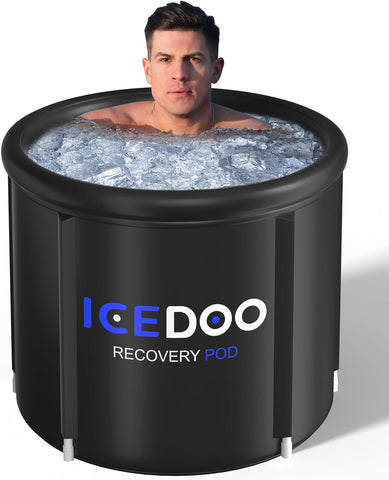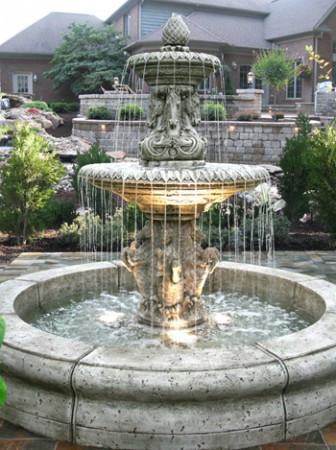Cold Plunge Temperature Guide
In an era where wellness trends come and go, one practice has stood the test of time: cold plunging. From ancient civilizations to modern-day athletes and health enthusiasts, the benefits of subjecting oneself to cold temperatures are widely acknowledged. But what exactly is the optimal cold plunge temperature, and how does it affect our bodies? In this comprehensive guide, we delve into the science behind cold plunging and explore the ideal temperature for maximizing its therapeutic benefits.
Understanding Cold Plunging
Cold plunging, also known as cold water immersion or cryotherapy, involves submerging the body in cold water for a short duration. While it may seem like a simple practice, the physiological responses it elicits are profound. When exposed to cold temperatures, the body activates its thermoregulatory mechanisms to maintain core temperature, leading to various physiological adaptations.
The Science of Cold Plunge Temperature
The optimal temperature for cold plunging depends on several factors, including individual tolerance, intended therapeutic outcomes, and environmental conditions. However, research suggests that water temperatures ranging from 50°F to 60°F (10°C to 15.5°C) are commonly used for cold plunging due to their ability to induce therapeutic effects without causing significant discomfort or risk of hypothermia.

Factors Affecting Ideal Temperature of a Cold Plunge
Finding the ideal temperature for a cold plunge is a personalized process that requires consideration of individual factors, desired outcomes, and safety considerations. By understanding the science behind cold water immersion and taking appropriate precautions, individuals can maximize the benefits of this practice while minimizing potential risks. Whether it's for enhanced recovery, improved circulation, or mental well-being, optimizing the temperature of your cold plunge can enhance its effectiveness and ensure a safe and comfortable experience.
Several factors influence the ideal temperature for a cold plunge:
- Individual Tolerance: Each person's tolerance to cold water varies. Factors such as body fat percentage, age, and overall health can impact how well an individual tolerates colder temperatures.
- Desired Outcome: The intended purpose of the cold plunge also plays a role in determining the ideal temperature. For example, a colder temperature may be preferred for enhanced recovery, while a slightly warmer temperature may be more comfortable for general wellness purposes.
- Environmental Conditions: The ambient temperature and humidity of the surrounding environment can affect how cold water feels to the body. A colder environment may necessitate slightly warmer water temperatures to prevent excessive cold stress.
Finding the Ideal Temperature for Your Cold Plunge
- Experimentation: Determining the ideal temperature for a cold plunge often involves a process of trial and error. Start with a temperature slightly below your comfort level and gradually decrease it until you reach a point that provides the desired benefits without causing discomfort.
- Consultation with Experts: Seek guidance from experienced cold plunge practitioners or healthcare professionals who can provide personalized recommendations based on your individual health status and goals.
- Monitoring Body Response: Pay attention to how your body responds during and after a cold plunge. Signs of discomfort or excessive shivering may indicate that the water temperature is too cold, while a lack of physiological response may suggest that it is too warm.
Safety Considerations When Cold Plunging
While cold plunges offer numerous benefits, they also pose certain risks, particularly when water temperatures are extremely cold. It's essential to prioritize safety when engaging in cold water immersion:
- Gradual Adaptation: If you're new to cold plunges, start with shorter durations and warmer water temperatures to allow your body to acclimate gradually.
- Avoidance of Hypothermia: Prolonged exposure to very cold water can lead to hypothermia, a potentially life-threatening condition. Always monitor your body's response and exit the water if you experience severe shivering, confusion, or other symptoms of hypothermia.
- Hydration and Warm-Up: Stay hydrated before and after a cold plunge, and consider warming up with light exercise or stretching to promote circulation and prevent muscle stiffness.
- Consultation with Healthcare Professionals: Individuals with certain medical conditions, such as cardiovascular disease or Raynaud's phenomenon, should consult with their healthcare provider before engaging in cold water immersion.
Conclusion
Determining the perfect cold plunge temperature is a personalized endeavor, involving careful consideration of individual factors, desired results, and safety precautions. Cold plunging at the right temperature can offer a myriad of benefits for both body and mind. By understanding the science behind cold immersion and incorporating it into your wellness routine responsibly, you can harness its therapeutic potential to enhance recovery, boost immunity, and improve overall well-being. Whether you're a seasoned athlete seeking an edge in performance or simply looking to optimize your health, exploring the depths of cold plunge temperature may hold the key to unlocking your full potential.
